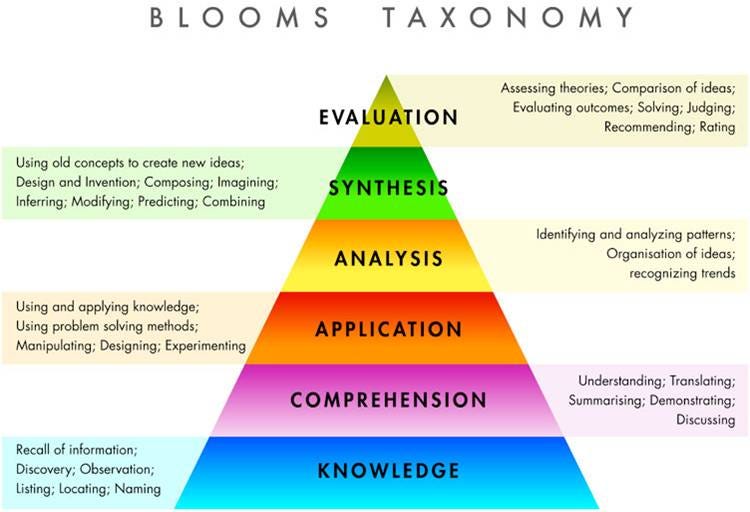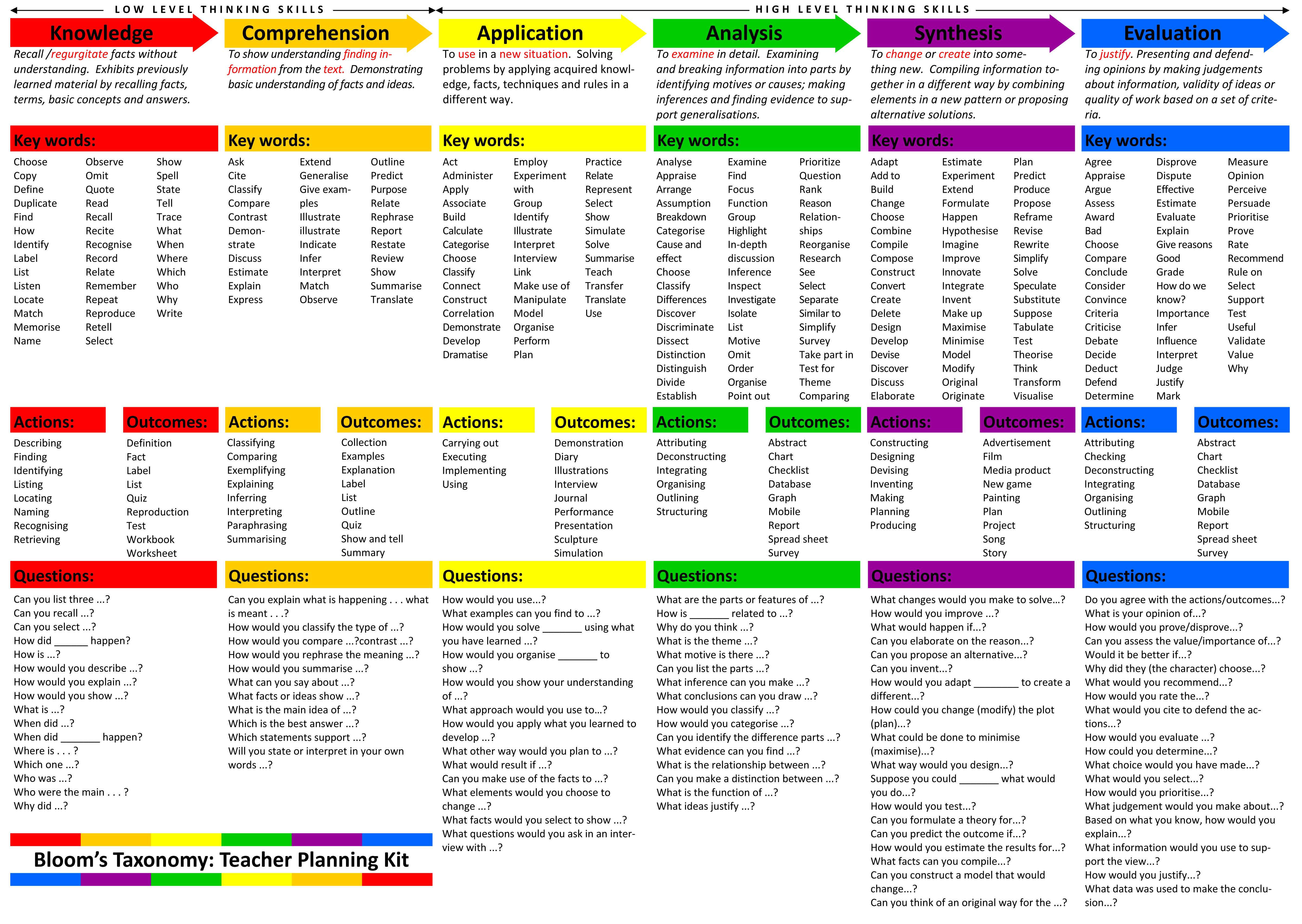Bloom S Taxonomy Higher Order Thinking Skills Questions

Benjamin bloom 1913 1999 is an educational psychologist who led the effort in developing a taxonomy that served as a framework for classifying learning objectives i e what we expect students to learn as a result of instruction.
Bloom s taxonomy higher order thinking skills questions. Looking for more resources on 21st century skills and social emotional learning. By providing a hierarchy of levels this taxonomy can assist teachers in designing performance tasks crafting questions for conferring with students and providing feedback on student work. On the other hand students will tend to approach a topic at higher levels of thinking if they are presented with an abundance of questions at higher levels of thinking. For some of us it takes a concerted effort to implement this into our daily lesson plans.
As a teacher you should ensure that the questions you ask both in class and on written assignments and tests are pulled from all levels of the taxonomy pyramid. Before you set out to write your course outcomes and objectives it is very helpful to understand bloom s taxonomy and higher order thinking. Using higher order thinking skills and questioning is at the heart of truly differentiated instruction. Just like the original taxonomy the revised version provides a valuable framework for teachers trainers and instructional designers to use to focus on higher order thinking.
Integrating benjamin blooms taxonomy questions into your lessons provides a way to differentiate and extend student learning. Bloom s taxonomy was revised in 2001. Bloom s taxonomy is a framework that starts with these two levels of thinking as important bases for pushing our brains to five other higher order levels of thinking helping us move beyond remembering and recalling information and move deeper into application analysis synthesis evaluation and creation the levels of thinking that your professors have in mind when they are designing. Visit our bloom s taxonomy activities printable for a downloadable version.
This taxonomy ranges from lower to higher levels of cognitive thinking. Not all questions are on the same level. Bloom s taxonomy is named after benjamin bloom a psychologist who in 1956 developed the classification of questioning according to six levels of higher level thinking. Bloom 1956 has provided us with his taxonomy to assist us to compose questions on different levels of thinking.
The lower order thinking skills lots involve memorization while higher order thinking requires understanding and applying that knowledge. These types of questions only require children to use memorization in order to respond. Some questions are easy to answer where other questions may require a great deal of thinking. Bloom s taxonomy bloom s taxonomy provides an important framework for teachers to use to focus on higher order thinking.
By providing a hierarchy of thinking both version can help in developing performance tasks creating questions or constructing problems.
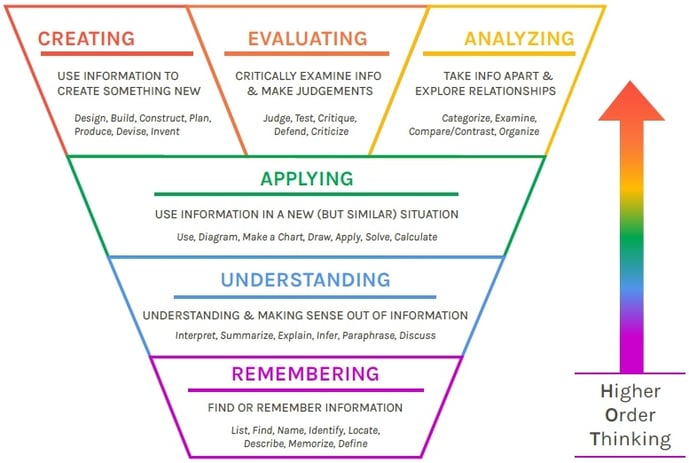


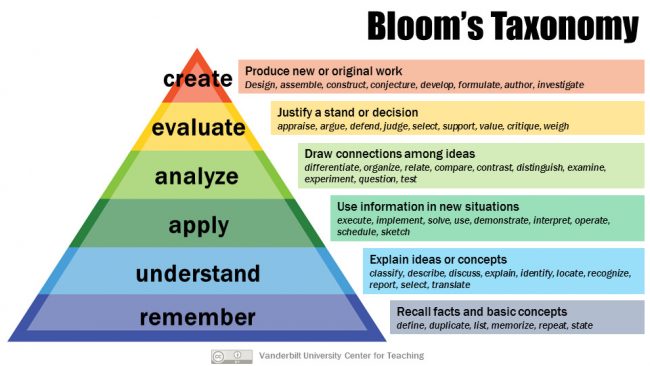



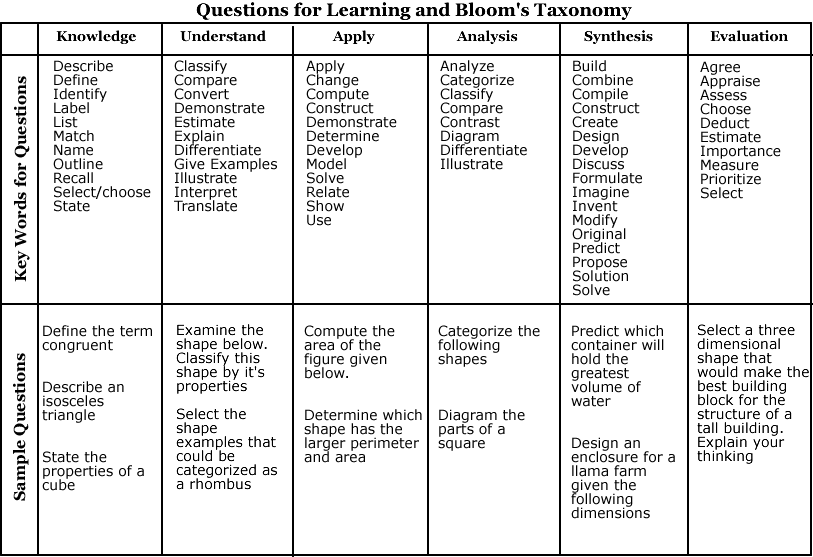
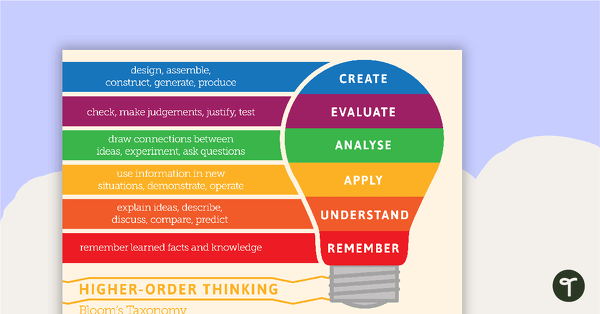



/Blooms-Graphic-1024x757-00772b45d3974746afa6aa8a34db64e6.jpg)

